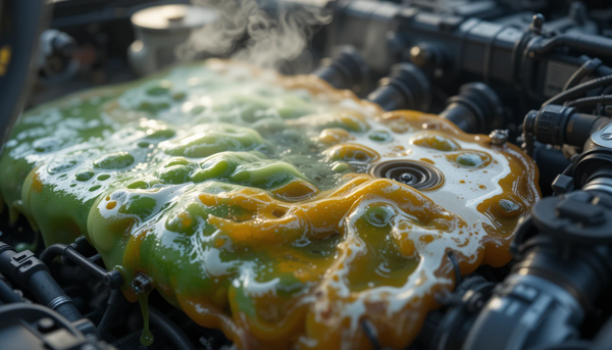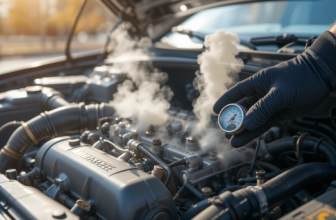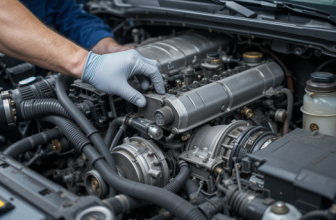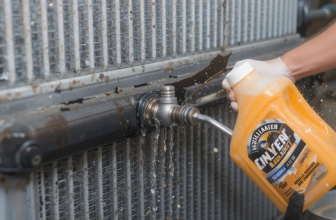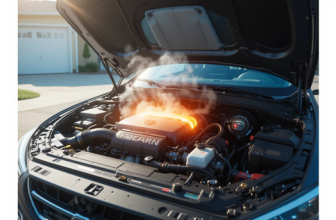What happens if you mix coolants? Learn why it’s a bad idea and how to avoid engine damage in this easy-to-follow guide.
What Happens If You Mix Coolants? 🤯
Ever topped off your coolant without checking the color? 🚗 You’re not alone—but what really happens when you mix them? Is it harmless, or are you slowly destroying your engine?
Let’s break it down: mixing coolants is almost always a bad idea. Whether you did it by accident or just didn’t know there were different types, your engine could face serious consequences—like corrosion, overheating, or even a complete failure.
But don’t worry—this article explains everything you need to know in plain, simple terms. We’ll cover:
- Why coolant types matter
- What goes wrong when they’re mixed
- What to do if it already happened
- How to avoid costly repairs in the future
Let’s get into it. 🧰
🚦 What Are Coolants and Why Do They Matter?
Coolants—also called antifreeze—regulate your engine’s temperature. They stop it from freezing in winter and overheating in summer. More importantly, they prevent internal corrosion.
There are several types of coolants, and each is designed with specific chemical formulas. These formulas are not interchangeable. That’s where things can get tricky.
Coolants typically fall into three categories:
- IAT (Inorganic Acid Technology): Found in older vehicles. Usually green.
- OAT (Organic Acid Technology): Common in newer vehicles. Typically orange, red, or pink.
- HOAT (Hybrid Organic Acid Technology): A mix of both, often yellow or turquoise.
Different colors = different chemicals = different effects.
🚨 What Happens If You Mix Coolants?
Mixing coolants seems harmless—but it’s a chemical nightmare inside your engine. ❌ Here’s what really happens:
- Chemical reaction: Mixed coolants can turn into a sludge-like substance.
- Clogged passages: That sludge may clog your radiator and coolant channels.
- Overheating: Coolant can no longer flow properly, leading to engine overheating.
- Corrosion: The protective inhibitors get diluted, causing rust and internal damage.
- Pump wear: Water pump performance suffers, increasing failure risk.
Quick Fact: Even if it looks fine after mixing, the damage happens over time—silently.
💥 I Accidentally Mixed Coolants—Now What?
Don’t panic, but don’t ignore it either. Here’s what to do if you mixed them:
- Stop driving immediately if you notice strange noises or overheating.
- Check coolant color and consistency. If it’s cloudy or dark, you’ve got a problem.
- Flush the cooling system. Drain and replace the coolant entirely.
- Use the manufacturer-recommended coolant only.
- Consult a mechanic if you’re unsure or if damage may have already started.
🧪 Common Types of Coolant and Their Compatibility
Here’s a quick compatibility snapshot to help you understand what mixes and what definitely doesn’t:
| Coolant Type | Color (Typical) | Mix Compatibility | Recommended Use |
|---|---|---|---|
| IAT | Green | ❌ Do not mix with OAT/HOAT | Older vehicles (pre-1995) |
| OAT | Orange/Red/Pink | ❌ Never mix with IAT | Newer vehicles |
| HOAT | Yellow/Blue | ❌ Avoid mixing | Some European/Chrysler models |
| Universal | Varies (often yellow) | ⚠️ Claims compatibility—but not always safe | Emergency only |
Even so-called “universal” coolants are often not truly universal. Always check your owner’s manual.
🧊 Signs You’ve Mixed Coolants (Even By Accident)
Not sure if you or someone else may have mixed coolants? Watch for these symptoms:
- Murky or brown coolant color
- Sweet, burnt smell from engine
- Rapid temperature gauge fluctuations
- Heater not blowing warm air
- Strange knocking or bubbling sounds
👂 If you hear bubbling in the engine bay, don’t ignore it—something’s up.
🔧 Why Coolant Chemistry Matters
Coolants have special inhibitors that fight rust, scale, and wear. Mixing different types can make these chemicals neutralize each other. This leads to sludge and stops cooling.
“It’s not the coolant itself—it’s the reaction between incompatible additives that causes problems.” – Auto techs everywhere
Here’s a look at how inhibitor types differ:
| Coolant Type | Inhibitor Base | Lifespan | Maintenance Needs |
|---|---|---|---|
| IAT | Silicates, Phosphates | 2 years | Frequent flushes |
| OAT | Organic Acids | 5 years | Low maintenance |
| HOAT | Hybrid Blend | 5 years | Moderate maintenance |
🛑 Can Mixing Coolants Void My Warranty?
Yes, it absolutely can.
Many car manufacturers say using non-approved coolant can void engine coverage. If your engine fails because of the wrong coolant, you could face a $3,000+ repair bill. All for skipping a $20 jug.
🌡️ Coolant Mixing Myths Debunked
Let’s clear the air on a few myths:
- ❌ “All coolants are the same.”
Nope—different types serve different engines. - ❌ “You can mix a little—it’s fine.”
Even small amounts can destabilize the entire system. - ❌ “Universal means it works everywhere.”
Universal coolants may cause gradual corrosion.
Stay smart and check labels always. 🧐
🧼 How to Properly Flush Your Coolant System
If you’ve mixed coolants or want to switch to the right one, flushing is key. Here’s how to do it:
- Let the engine cool completely.
- Open radiator drain plug and remove old coolant.
- Fill with distilled water and run engine briefly.
- Drain again—repeat until water runs clear.
- Add recommended coolant and top off the reservoir.
- Bleed air bubbles from system.
Always use distilled water—tap water can cause mineral deposits and more rust. 🚿
🧰 Tools You’ll Need to Flush Your Coolant
Before starting, make sure you’ve got these:
| Item Needed | Purpose | Cost Estimate |
|---|---|---|
| Drain Pan | Catch old coolant safely | $10–$20 |
| Funnel | Easy refill without spills | $5–$10 |
| Distilled Water | System flush (no minerals) | $1–$3/gallon |
| New Coolant (OEM) | Correct fluid for your car | $15–$30 |
| Gloves & Goggles | Safety first! | $5–$15 |
And always dispose of old coolant responsibly. It’s toxic to pets and the environment.
🕵️♂️ How Mechanics Diagnose Coolant Mixing Issues
When in doubt, a mechanic can:
- Test coolant pH (to see chemical breakdown)
- Inspect for sludge in the reservoir or radiator
- Pressure test the system for leaks
- Use dye tests to find blockages or corrosion
They can tell right away if two coolants were mixed—and what damage has occurred.
🚗 How to Prevent Coolant Mixing in the Future
Here are simple habits that go a long way:
- Check your owner’s manual before adding anything.
- Label your coolant container clearly in your garage.
- Use a dedicated funnel for coolant only.
- Don’t mix brands or colors, even if they’re the same type.
- Ask your mechanic what they’re using during service.
🔍 When in doubt, don’t guess—double-check!
🧊 Better Safe Than Sorry: Use the Right Coolant
In short, coolant isn’t “just antifreeze.” It’s a critical fluid with complex chemistry that keeps your engine alive. Mixing coolants might seem minor, but it’s a silent killer for your car’s cooling system.
Stick with what your car was designed for. Mixing coolants may save you 10 minutes today, but cost you thousands later. Don’t take that risk.
❓FAQs
What should I do if I accidentally mix coolants?
Flush the system and refill with the right type quickly. Waiting can cause harm.
Is it okay to mix red and green coolants?
No. Mixing them can cause problems. Always use the same color.
Can mixed coolant cause engine damage?
Yes. It can block the system and harm the engine over time.
How do I know which coolant my car uses?
Look in the owner’s manual or call your dealer. Using the wrong one is risky.
Is universal coolant really safe to use?
Only in emergencies. Using it long-term can cause problems.
📚 References
https://www.autoblog.com/article/engine-coolant-explained/
https://www.motortrend.com/features/engine-coolant-basics/
https://www.napaonline.com/en/p/cooling-system-flush-tips

